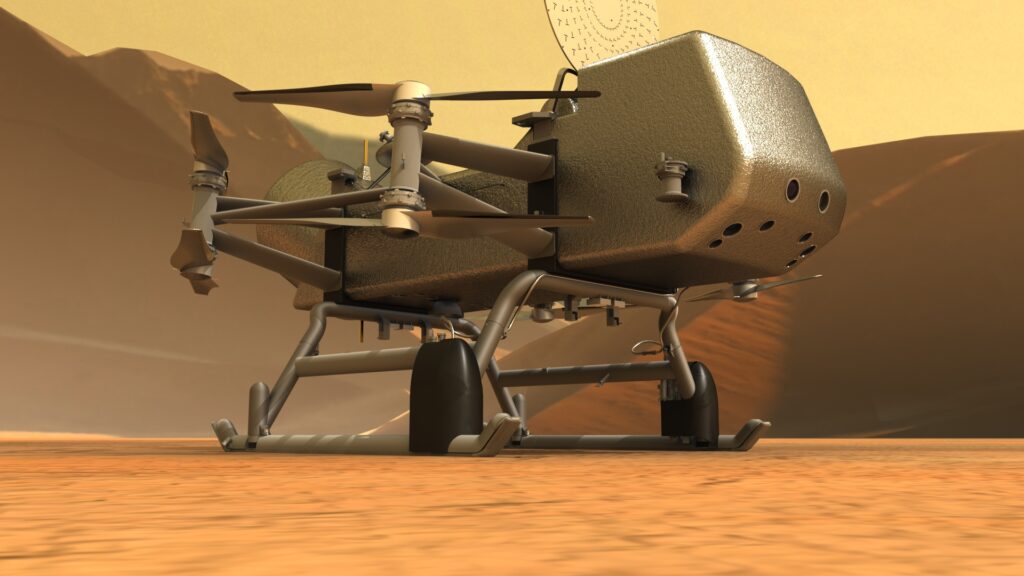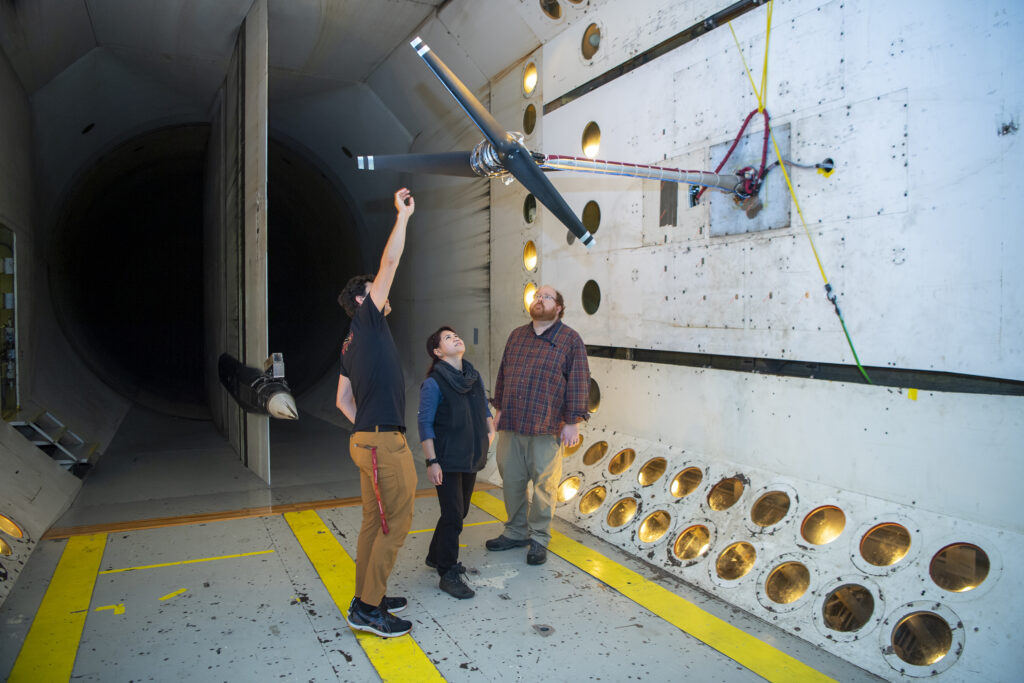Specialists of the Research Center named after Langley conduct tests of a prototype rotor, which is planned to be used in the Dragonfly mission. Within its framework, a drone will be landed on Titan, which will study its atmosphere and hydrocarbon seas.
Drone for Titan
The Dragonfly mission was approved in 2019. Its target is Titan, the only moon of the planet in the Solar System with a dense atmosphere. It is also the only known body (not considering the Earth), on the surface of which there are reservoirs filled with liquid. But if on our planet it is water, then on the largest Saturnian moon its role is played by a mixture of liquid hydrocarbons — mainly methane and ethane. In addition, it is assumed that there is a global ocean under the surface of the moon, consisting of a mixture of ammonia, water and mineral salts.

As part of the mission, NASA plans to send a rotary-wing aircraft with a total weight of about 450 kg to Titan. It will be equipped with four pairs of rotors, allowing it to move at a speed of about 36 km/h and rise to a height of up to 8 km. The drone’s power supply will be provided by a radioisotope thermoelectric generator (RTG).
The main task of the device will be to search for complex organic molecules and assess the overall suitability of this celestial body for life. The drone will be able to collect samples from the Titanic surface and conduct their chemical analysis. Dragonfly will also study the moon’s terrain, its atmosphere and hydrocarbon reservoirs.
Dragonfly Rotor Prototype Tests
The success of the entire mission will depend on how successfully the specialists will be able to solve the problem of flying in the atmosphere of Titan. On the one hand, the atmospheric pressure at its surface is 1.5 times greater than on Earth. On the other hand, the gravity there is 7 times less than on our planet. Mission designers also need to take into account the different composition of the atmosphere and very low temperatures of the order of -180°.

To find answers to these questions, NASA engineers first resorted to computer modeling, and then conducted real tests in the TDT wind tunnel located at the Langley Research Center. It was chosen due to its size, allowing the use of full-scale equipment, as well as the ability to fill the tunnel with heavy gas. A prototype of a coaxial pair of Dragonfly rotors participated in the tests.
The researchers simulated the expected conditions for hovering, descending and rising altitude and estimated the aerodynamic loads for each rotor at different wind speeds, shaft rotation angles and throttle settings. The researchers also conducted tests with one working and one non-working rotor to evaluate failure modes. Sensors and accelerometers on the tested product measured the loads and accelerations generated under different operating modes of the rotor, as well as at different wind speeds and directions.
A preliminary analysis of the data showed that the forecasts of rotor performance and power requirements are correct, and similar forecasts for operation on Titan are within the expected mission tolerances. According to the researchers, this result was an important step towards the realization of the mission. At the moment, its launch is scheduled for 2027, landing on Titan should take place in 2035.
According to https://www.nasa.gov
Follow us on Twitter to get the most interesting space news in time
https://twitter.com/ust_magazine
